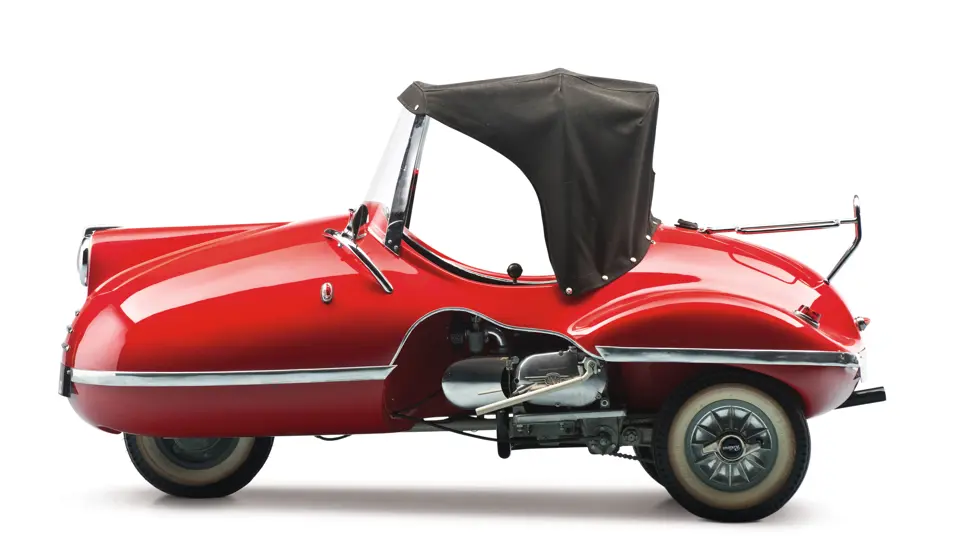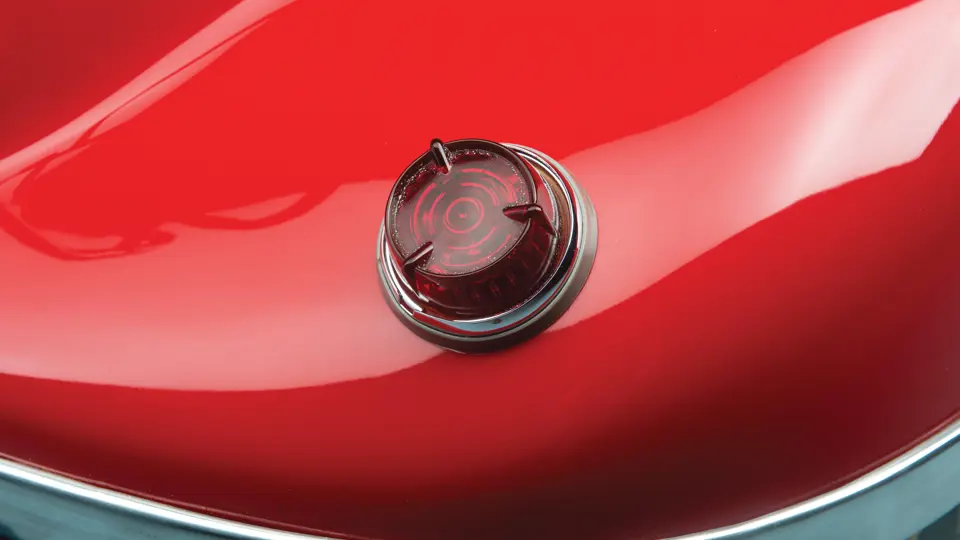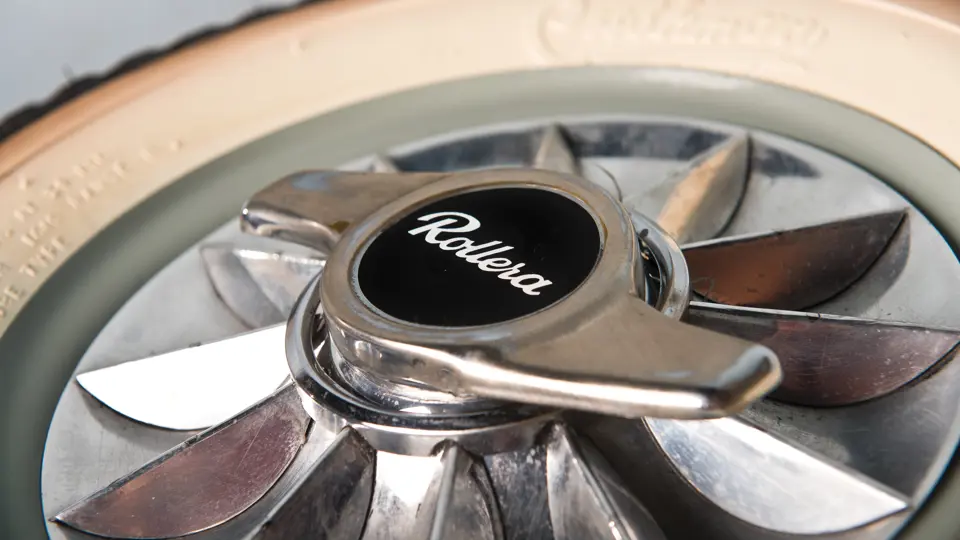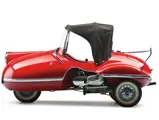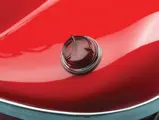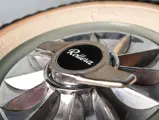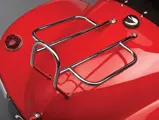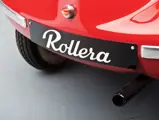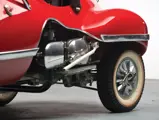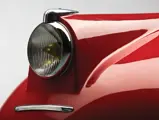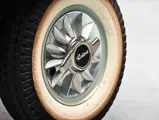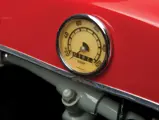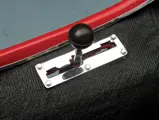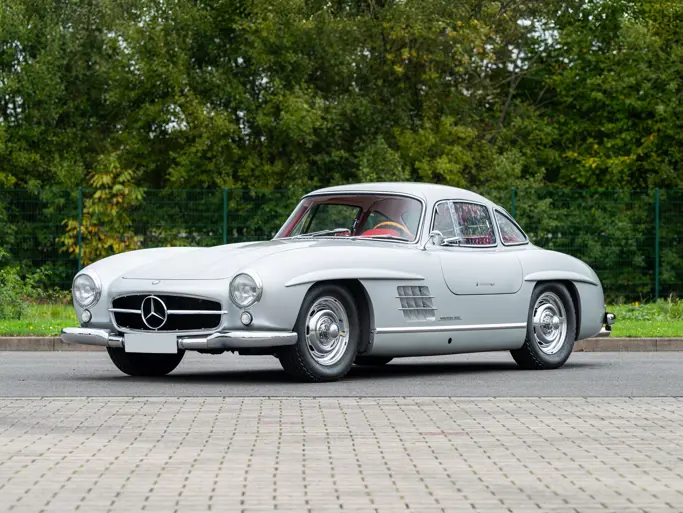One of only a handful known to exist.
SPECIFICATIONS
Manufacturer: Sté. Rollera Francaise
Origin: Levallois-Perret, France
Production: N/A
Motor: AMC 1-cyl, 2-stroke
Displacement: 98 cc
Power: 5.2 hp
Length: 6 ft. 10 in.
Identification No. T2002020
Egon Brütsch was a prototype-builder and a promoter of fiberglass as a construction material. While he used his father’s nylon stocking fortune to finance an early racing career, he preferred to actually build the cars themselves. His single-seat racing car became a single-seat coupe, the Model T. A Lloyd 400-engined prototype was next, and finally, two Ford-powered prototypes, which were selling at the price of a Porsche. Reworking production cars for wealthy clients came next in the form of a Ford 1200-powered Gutbrod, which was nixed by Ford.
Clearly a way of circumventing the high cost of shaping steel was needed. Inspiration came from the recently-shown Chevrolet Corvette, which utilized the new wonder-material called fiberglass. Brütsch commissioned a wood model of an egg-shaped three-wheeled small car from a sketch. He may have been influenced in his drawing by the near-identical three-wheeler of French engineer Victor Bouffort, who had made a 7,000 kilometer promotional tour of Germany two years before. This model, carried in his suitcase during his tours, resulted in a license being sold to France for the sum of 20,000 marks.
Some time spent experimenting with the BASF-supplied resins passed, and the prototype Brütsch 200 Spatz (Sparrow), powered by a 191-cubic centimeter Sachs motor, made its debut on a tiny stand at the 1954 Paris Salon. Three license applications were accepted: first to Grünhut, who would build the Belcar in Switzerland; then to Friederich, who would build the Spatz/Victoria; and finally to Jean Avot, who would build the Avolette.
Trouble ensued when the car that was designed by Brütsch was not suitable for the road, the suspension elements being flimsily bolted directly to the fiberglass. All three license-built cars required proper frames as a solid attachment for the suspension. Friederich in particular had hired famed Tatra engineer Hans Ledwinka to do the work. All three licensees, led by Harald Friederich, banded together and took legal action, claiming the redesigned cars were not the same as Brütsch’s original and the three companies should not have to pay license fees; the court agreed.
Lesson learned. Brütsch’s next effort, the Zwerg (Dwarf) sat on a proper frame. Two versions were built: a single-seater with an automatic 75-cubic centimeter DKW motor and a panoramic windshield and a two-seater with a 250-cubic centimeter Maico motor and a flat windshield. The little Mopetta, “the world’s smallest car,” came next. The 50-cubic centimeter miniature was tax and license-free and was shown at the IFMA in October 1956, where it caused a considerable stir.
A near-twin was shown alongside the Mopetta at the show. It was the slightly bigger Rollera, with a little more interior room and a 100-cubic centimeter Sachs motor sitting on the right side of a similar frame. Two new cars were at the same show: the three-wheeled Bussard with a 291-cubic centimeter Sachs motor and the four-wheeled Pfeil (Arrow) with a 400-cubic centimeter Lloyd motor. Brütsch tried again in 1957 with the V-2 (for Volks two-seater) and the V-2N (for investor Ngo), but gave up in the fall of 1958. He eventually built prefab fiberglass houses, which turned out to be a profitable venture.
This very special car is a French Rollera built under license by the Société Rollera Francaise, not by Air Tourist as is often thought. A monthly rate of 50 cars was expected. This example is one of at least three survivors known. The French-built cars like this one had an AMC motor on the left side, chrome grab handles with a mirror on one, French lighting, a luggage rack, and usually tubular bumpers. It was found in Germany, restored in Canada, and sold to a buyer who used it as a sandbox toy for children. After joining the museum, it was re-restored to its present, exceptional condition.




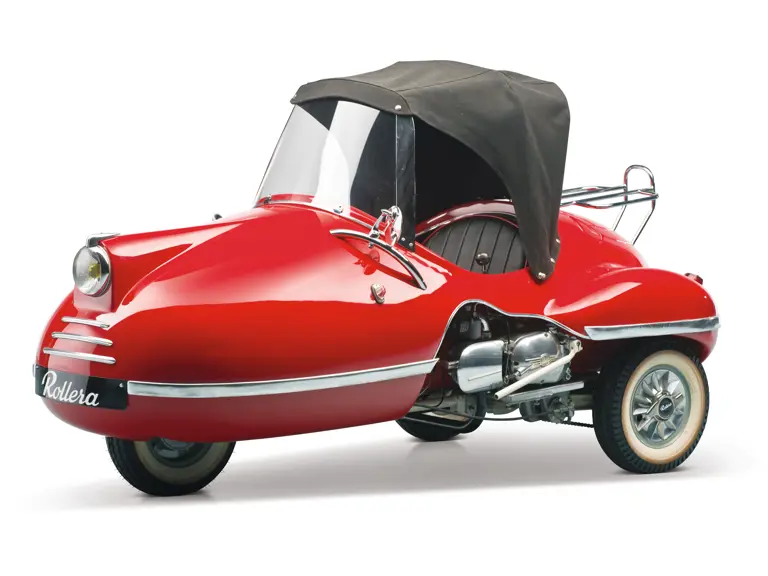
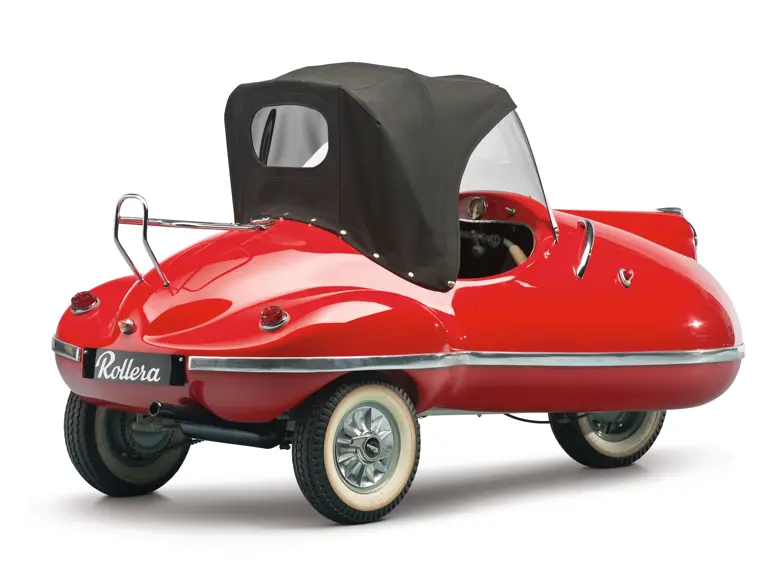
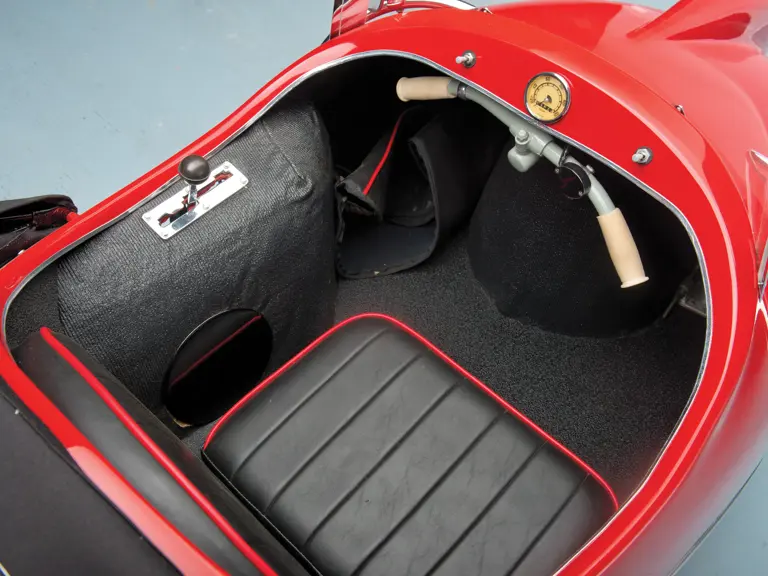
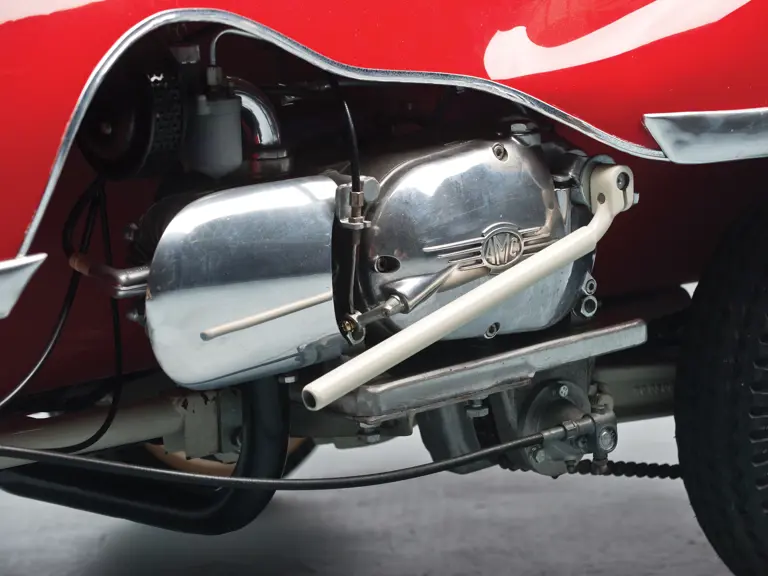
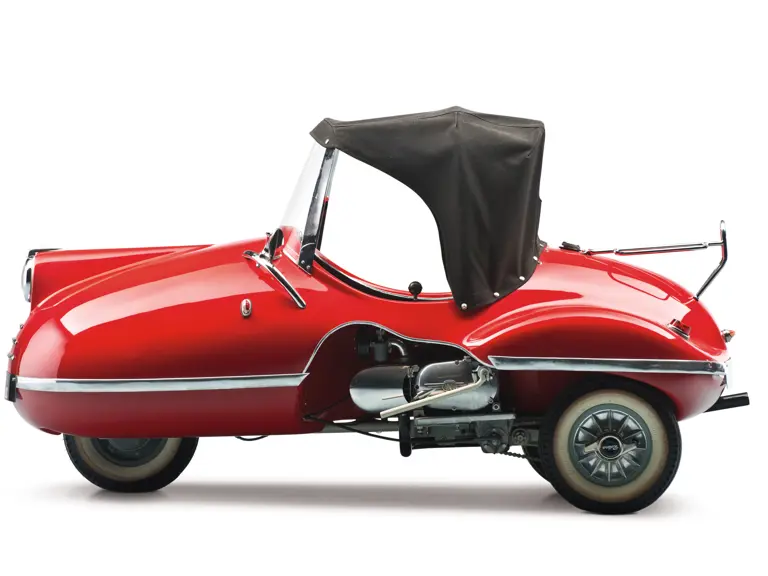
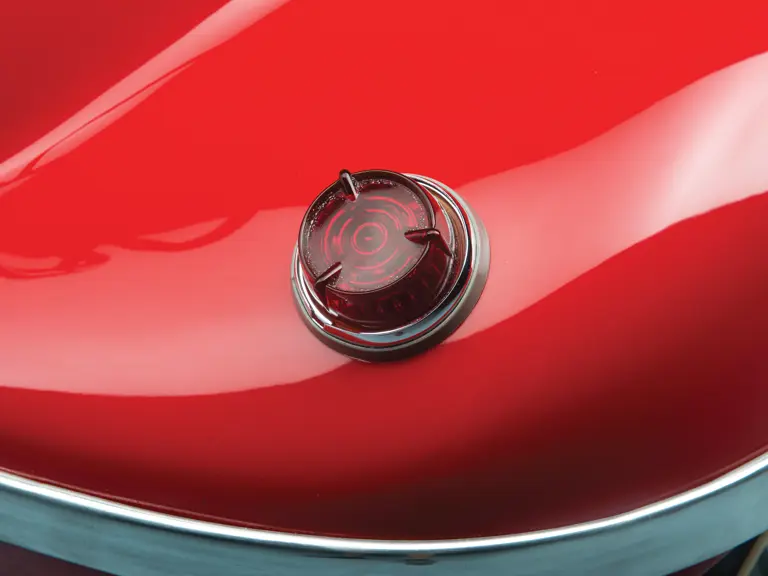





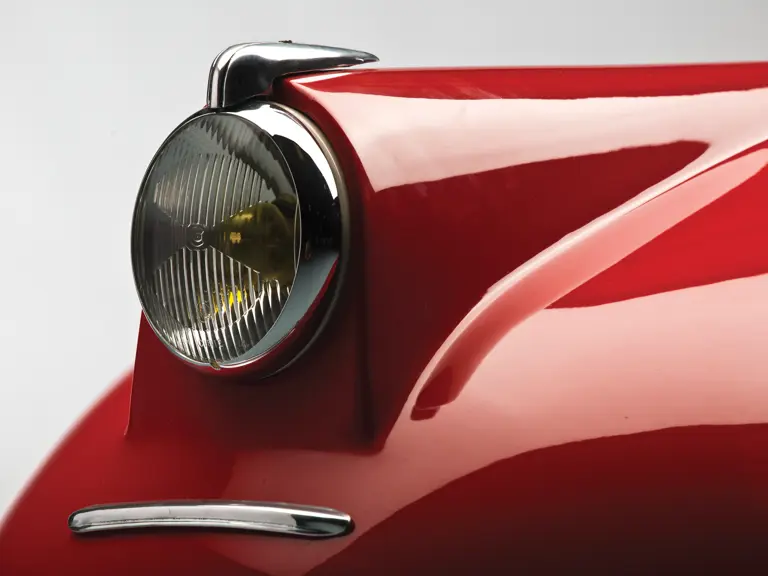
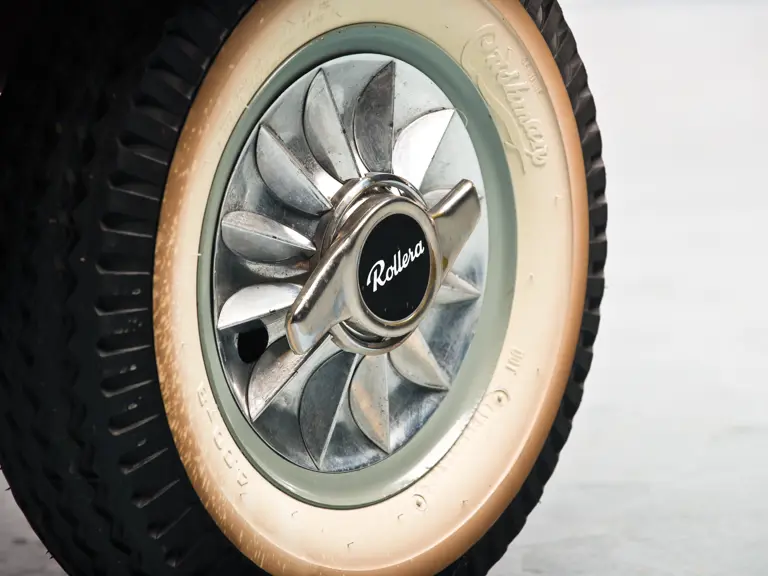

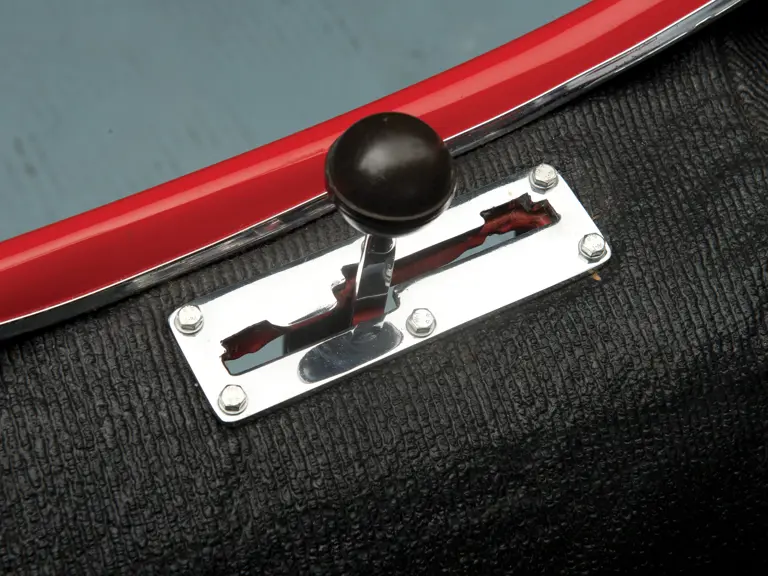

 | Madison, Georgia
| Madison, Georgia
